Native name 武蔵野線 Stations 26 Operator(s) JR East, JR Freight | Type Heavy rail Opened 1973 | |
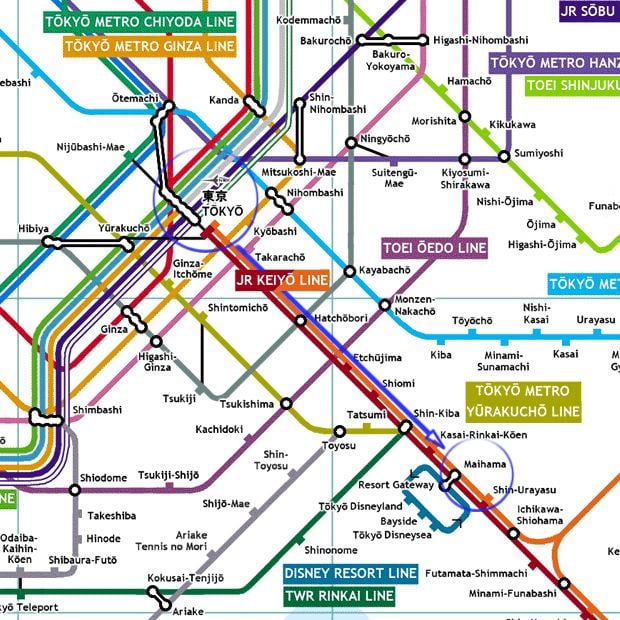 | ||
Terminis Fuchūhommachi Station, Nishi-Funabashi Station | ||
The Musashino Line (武蔵野線, Musashino-sen) is a railway line operated by the East Japan Railway Company (JR East). It links Tsurumi Station in Yokohama with Nishi-Funabashi Station in Chiba Prefecture, forming a 100.6 km unclosed loop around central Tokyo. Passenger operations are limited to the 71.8 km portion between Fuchūhommachi and Nishi-Funabashi; the Tsurumi to Fuchūhommachi portion, called the "Musashino South Line", is normally used only by freight trains. The line forms part of what JR East refers to as the "Tokyo Mega Loop" (東京メガループ) around Tokyo, consisting of the Keiyo Line, Musashino Line, Nambu Line, and Yokohama Line.
Contents
- Musashino line pt 2
- Services
- Station list
- Musashino Line passenger
- Rolling stock
- Former
- Freight
- History
- References
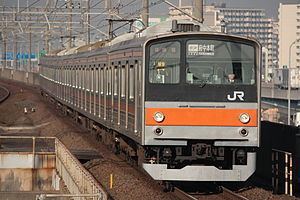
Musashino line pt 2
Services
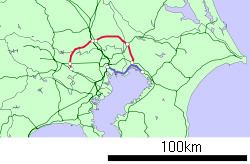
Most services on the Musashino Line are local trains making all stops. Some trains continue through the Keiyō Line past Nishi-Funabashi to Tokyo, Minami-Funabashi or Kaihimmakuhari.
Other services include:
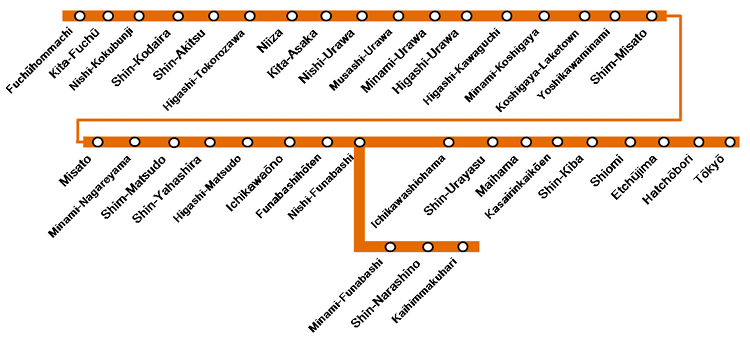
Station list
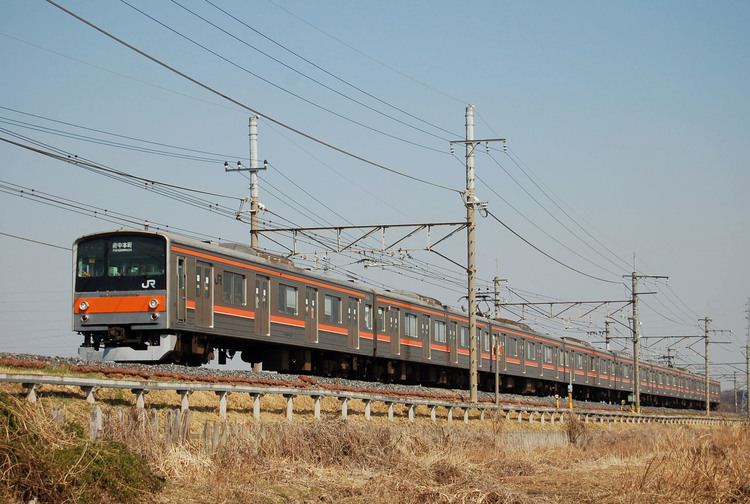
Tsurumi Station is considered to be the origin of the Musashino Line; trains going clockwise (toward Nishi-Funabashi) are therefore referred to as heading "down" (下り, kudari), while trains going counter-clockwise (toward Fuchūhommachi) are heading "up" (上り, nobori). This is often counterintuitive, as it results in through trains to Tokyo being labeled and numbered as "down" trains while on the Musashino Line; however, such trains switch to "up" after joining the Keiyō Line.
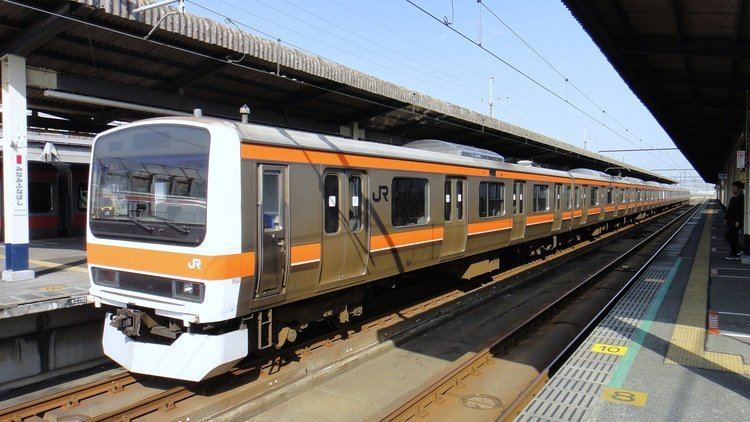
All passenger trains begin service at Fuchū-Hommachi Station; details on the Musashino South Line freight-only section can be found below the passenger station list.
Musashino Line (passenger)
Ōmekaidō Station is approximately 10 minutes walk from Shin-Kodaira Station.
Rolling stock
Trains on the Musashino Line are normally formed of 205 series (205-0 and 205-5000 series) and 209-500 series 8-car electric multiple units (EMUs). The 205-0 series sets were built from new for the Musashino Line, entering service from 1 December 1991, and have six motored cars per eight-car set. These were the last 205 series sets to be built from new. The 205-5000 series sets were modified between 2002 and 2008 from displaced former Yamanote Line sets by adding new VVVF-controlled AC motors, and have four motored cars per eight-car set. The 209-500 series sets were transferred from the Keiyo Line, where they were displaced by new E233-5000 series sets and reduced from ten to eight cars per set.
Former
165 and 169 series EMUs were used on Shinkansen Relay services and later Musashino rapid services until 2002. 115 series EMUs were used on Musashino services from 2002 until the services were downgraded to all-stations "Local" status in December 2010.
Freight
Locomotive types seen hauling freight trains include the Class EF64, Class EF65, Class EF66, Class EF81, Class EF200, Class EF210, Class EH200, Class EH500, Class DE10, and Class HD300.
History
The Musashino Line was initially envisioned as a "Tokyo Outer Loop Line" in a 1927 railway appropriations bill, but was not built for several decades due to World War II and its aftermath. Construction finally began in November 1965.
In 1967, a train carrying jet fuel to Tachikawa Air Base in western Tokyo exploded while passing through Shinjuku Station. This disaster led to the banning of freight trains on railway lines in central Tokyo and sped the development of the Musashino Line as an alternative route. Because most of the line passed through sparsely populated areas, it was initially envisioned as a freight-only line. However, opposition from local residents, at the same time as the violent landowner battles plaguing Narita International Airport, led the railway authorities to agree to passenger service as well.
The first section of the line between Fuchū-Hommachi and Shin-Matsudo opened on 1 April 1973. Train services were operated using 6-car 101-1000 series EMUs, which were modified specially for the line to comply with government regulations concerning fire resistance of trains operating through long tunnels, as the line included the 4,380 m (14,370 ft) Higashi-Murayama Tunnel (東村山トンネル) between Shin-Kodaira and Shin-Akitsu stations, and the 2,563 m (8,409 ft) Kodaira Tunnel (小平トンネル) between Shin-Kodaira and Nishi-Kokubunji stations. Services operated at 15-minute intervals in the morning peak, and at 40-minute intervals during the daytime off-peak.
The southern freight-only line from Fuchū-Hommachi to Tsurumi opened on 1 March 1976. The eastern section of the line from Shin-Matsudo to Nishi-Funabashi opened on 2 October 1978.
Inter-running to and from the Keiyo Line commenced on 1 December 1988.
From the start of the 1 December 1996 timetable revision, all of the Musashino Line 103 series sets were lengthened from six to eight cars.
